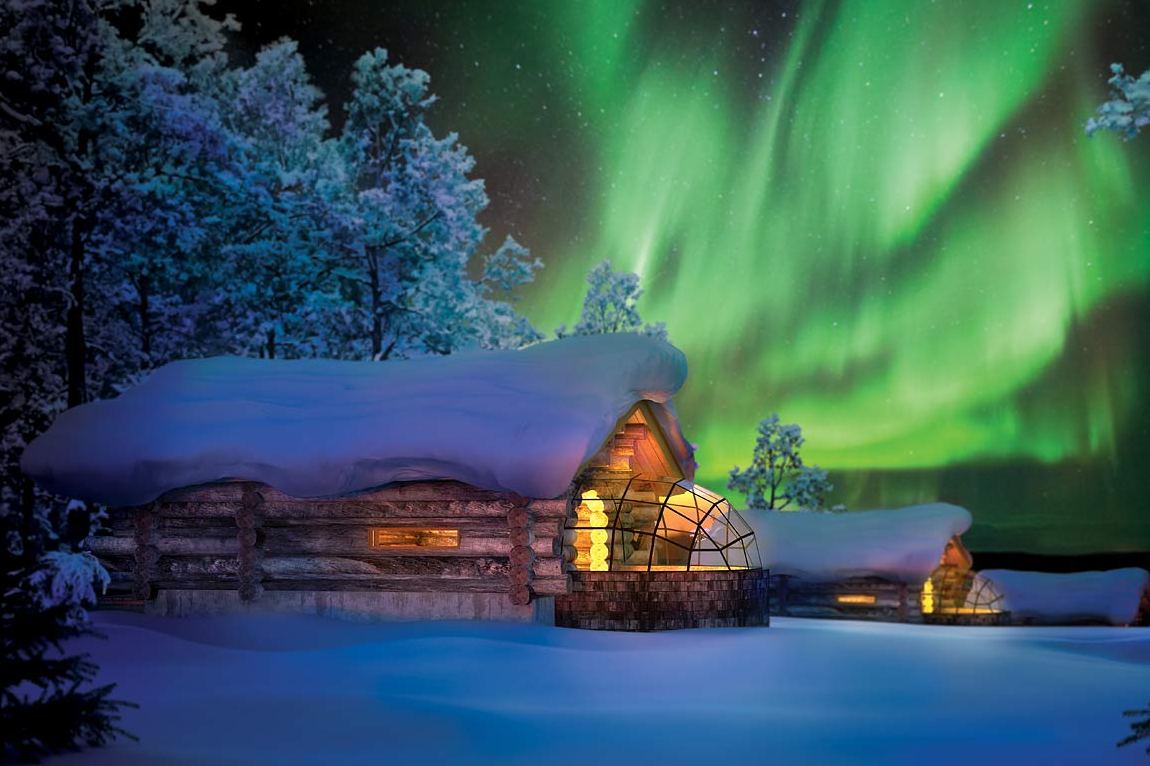Eskimo igloo: It is easy as a pie to build castles in ...snow

The British polar explorer Sir Ernest Shackleton is sure that the first expeditions to the South Pole failed because there are no Eskimos in Antarctica ready to contract to build an igloo for polar explorers. The dome-shaped snow huts protected members of the Arctic campaign of Robert Peary from freezing coldness and blizzards, turning into tiny islands of heat and light inside the white silence.
At the dawn of polar researches it was believed that only indigenous Eskimo knows how to build a right igloo, as aborigines take in with mother's milk an art of survival in the inhospitable lands of the Arctic, Greenland, Labrador and Alaska. The reindeer herders and hunters use the huts made of ice and snow as temporary housing, roaming across the tundra in search of a generous land. It takes the head of the family less than an hour to arrange a temporary home, so they leave it without any regrets moving to a new camp. In the rich pastures one can see igloo villages, in which the neighbouring houses are connected by corridors and tunnels. Photo kakslauttanen.fi
Photo kakslauttanen.fi
In 1914, a Canadian Arctic explorer Vilhjalmur Stefansson guessed the Eskimo secret, he gave sceptics a lesson on building an igloo from the snow and ice blocks. Nothing supernatural: one can hone skills in a winter park or snow covered garden by village cottage.
Only the fresh fine-grained snow is good for building, which has not got packed and icy. Blocks with inhomogeneous structure will crumble soon, threatening to leave the negligent owner alone with nature forces. No wonder that languages of Eskimo-Aleut family show amazing ingenuity in identifying different states of snow: a subtle shade of grey in dazzling white snow will help distinguish an old snow hill from a fresh one. Hikers and skiers are taught to understand sound. Gently crunching under feet is an encouraging sign, but if the shoe leaves a clear deeply pressed footprint, it is a wonderful sign.
Snow bricks, contrary to the popular view, are not sculptured but cut out with a knife with a thin long blade. The construction of temporary winter home requires up to forty blocks, basement bricks should be half times larger than the wall bricks. Photo hiconsumption.com
Photo hiconsumption.com
The easiest way to arrange bricks is "snail" shape, that is spiralling from right to left, with each turn to narrow the radius of the circle. To start, they find a high platform about three meters in diameter, remove crust and step on the edge a small indentation for blocks, which are laid out slightly sloping inwards. Narrow slits are compacted with snow, and to eliminate gaps between blocks after clamping with foundation, builders cut special elongated work piece.
Before laying out another rung of a spiral, they cut diagonally across the top of the three plates, except those that are on the entrance. In the resulting cavity they put the first unit of the upper row, and continue laying out, placing the top blocks with a support on the bottom three plates and carefully cutting off the protruding parts. With the construction of the walls, the bricks gradually take the form of a trapezoid, and after the transition to the dome they turn into pyramids, forming a vault. The optimum height of construction, verified by centuries, is about three meters.
With sufficient depth of snowdrift, entrance is arranged directly on the floor and they dig the corridor to it. If snow is not enough, the inlet is placed in the wall on the leeward side, constructing additional vestibule, which serves as an excellent storage area for equipment and food. Opposite the door is a bench fashioned out of the snow, where the whole family sleeps sprawled on fur blankets. The table is made of large blocks, and dinner is cooked on the fire lamps made of bowls with seal fat. Photo thecaribou.com
Photo thecaribou.com
Inside the cabin it is very comfortable: the room temperature reaches 20 degrees, and the ventilation is secured by a recessed entrance, curtained with skins. Cool fresh air is pushed up by carbon dioxide and scattered around the room, without making the house cold. By the spring dome vault begins to leak, and then the master scrapes frost from the roof, increasing the heat out. But for thick deposits of soot, well-built igloo could last till summer. Due to the heavy smell of burnings, the Eskimos change dislocation every two months, after having found a new place for housewarming.
There may be no windows in the igloo: only on the east coast of Baffin Island there are huts with skylights tightened with seals’ intestines. Nevertheless, inhabitants do not get bored in the dark. A burner flame fills the interior with the bright light, allowing to read, write and do fine manual work. According to eyewitnesses, the igloos outside are surrounded by a soft pink glow, noticeable from afar. Warm breath of sleeping insiders melts the walls, and the moisture immediately gets icy by frost, giving additional strength to the blocks and reinforcing the grip of bricks. For greater reliability, is recommended to pour a new building with water - after this procedure, dwelling can easily withstand the weight of a polar bear.
Nowadays, there is no need to pay for the polar romance with frostbite and scurvy. In Austria and Switzerland there are successful comfortable hotel in igloo style with all the comforts, including bar, sauna and disco. On Utsuvaare hill in Lapland there is a thriving mini-hotel Kakslauttanen, where you can spend an unforgettable night in an igloo with a glass ceiling, admiring the Northern Lights.
Cover photo pescart.com





















